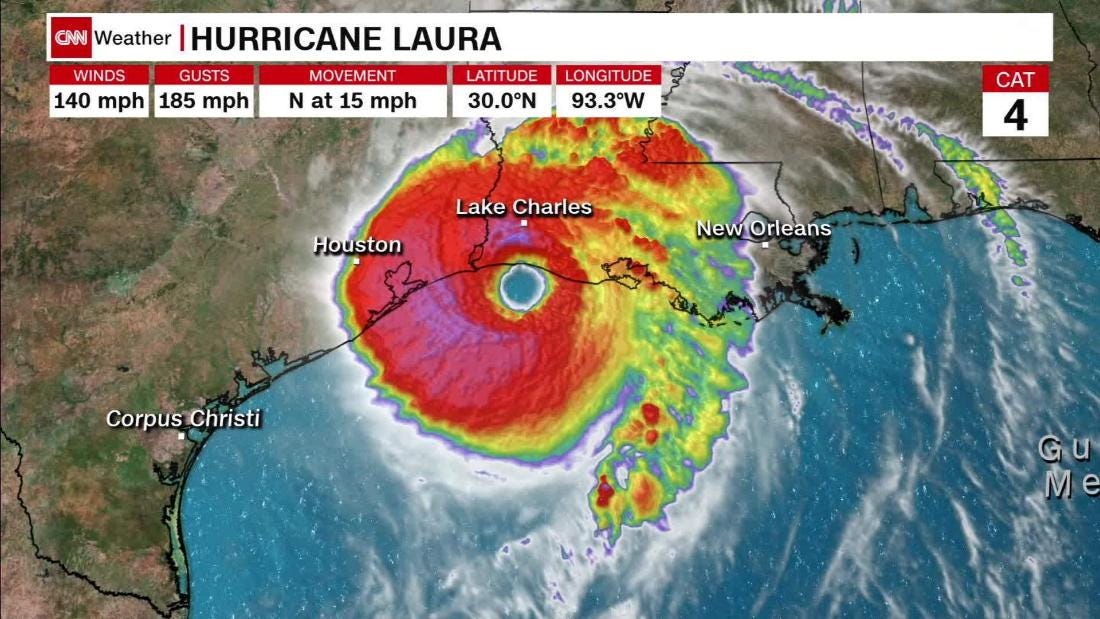Laura is Katrina on fossil fuel steroids
A hurricane stronger than Katrina, aimed directly at the U.S. petrochemical hub during a climate crisis and pandemic, as Donald Trump vies for re-election. What could go wrong?
Welcome to the web version of HEATED, a newsletter for people who are pissed off about the climate crisis. Want to receive original climate coverage in your inbox every morning, Monday through Thursday? Click the button below:


